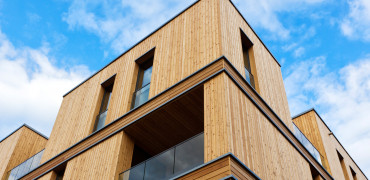Have you noticed the growth in green buildings around our towns and cities? And by that, I mean buildings that have incorporated plant life on their roofs or walls.
There’s a good reason for this and I think it’s a trend we are likely to see more and more of.
Not only do they look nice and help soften our ‘concrete jungle’ but they also help to regulate indoor temperature, combat external air pollution, absorb rainwater and increase biodiversity.
Visible or accessible green roofs in commercial settings can improve morale and productivity through psychological comfort and relief
A multitude of advantages
Commercial green roofs originate from Norway hundreds of years ago and are now increasingly being adopted all over Europe as the way forward for contemporary architecture and inner-city landscaping.
A green roof or living roof is the top part of a building that has been covered with living vegetation, usually planted over a waterproof membrane.
They are becoming an increasingly popular choice for commercial buildings as they provide a multitude of advantages such as environmental, functional and cost implications which are increasingly desirable for businesses looking to become more sustainable and lesson their carbon footprint.
These environmentally friendly roofs are performing an important role in helping our towns and cities adapt to the effects of climate change by helping to save energy whilst supporting the environment and providing a welcoming habitat for urban wildlife, such as birds and insects.
Green roofs also help reduce local flooding and can hold up to 80% of storm water runoff lessening what can sometimes be a dramatic impact on town and city drainage infrastructures during heavy downpours.
Green spaces
A beautifully designed green landscaped roof provides a fantastic use of space. These roofs offer an aesthetic quality and human dimension often missing in hard urban design.
They help create a more pleasant cityscape and add to the visual interest for workers.
Studies show that visible or accessible green roofs in commercial settings can improve morale and productivity through psychological comfort and relief.
Green infrastructure help lower carbon emissions, improve air quality, reduce energy consumption in addition they add aesthetic value for workers, architects and landscapers.
Through the process of photosynthesis, plants absorb carbon dioxide and release oxygen refreshing the surrounding air.
They also absorb harmful gases such as sulphur dioxide and nitrogen oxide within the atmosphere and help break down noxious gases emitted from vehicles and industrial activities.
Long term value
A commercial green roof will generally cost less than a traditional roofing system initially and are a great investment thanks to the long term value they provide for a commercial property.
A professionally installed green roof also offers protection from damaging elements and therefore a Green Roof can increase a roofs lifespan up to 3 times.
Furthermore a commercial business will benefit from reduced energy bills as the natural qualities of the installation will provide temperature control and insulation.
Green roofs also offer cooling control in hot weather which reduces the need for air conditioning and in winter heating bills can be reduced by 10%.
Keeping the noise down
In addition to all of these benefits, a combination of all the materials used in a roof garden acts as a natural sound installation with tests showing a noise reduction of up to 50db.
Urban areas as a whole have a higher temperature than their rural neighbours due to the lack of green space.
Vegetation found on Green Roofs improves our microclimate by absorbing heat and reducing the temperature of hard surfaces and enhancing humidity.
The Government or local councils do offer some grants and incentives to business thinking of a Green Roof solution.
These particular roofs offer a rich habitat for small insects and invertebrates within an urban environment.
Vertical greenery
If an entire roof isn’t viable for your building, biowalls can be installed which also reflect solar radiation, improve air quality and reduce run off.
They can also be watered with grey water that has been used for other activities. These walls can be installed inside and out. A plant sitting on your desk can improve your mood, imaging what an entire wall could contribute!
Kirsty Hammond is editor and publisher of Specifier Review, which posts building product and project news


